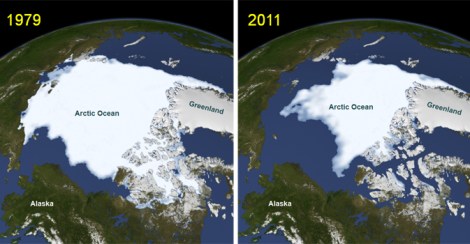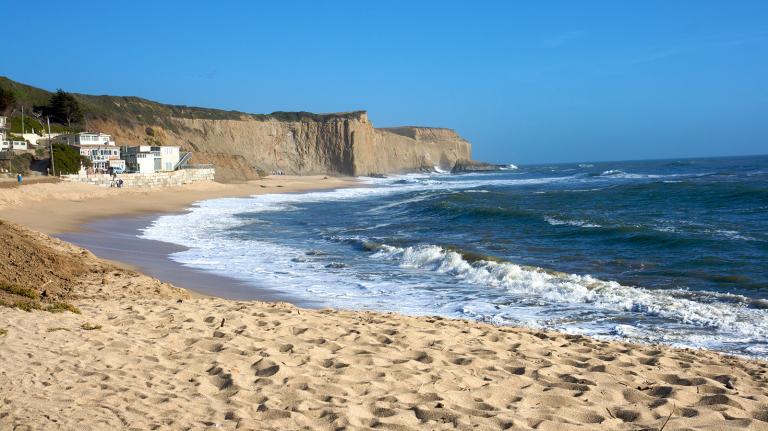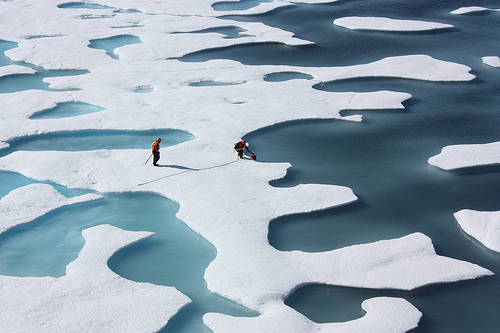Every once in awhile, we reach a moment in history that so radically changes our concept of the world it forces us to redraw our maps — events like Columbus rediscovering America or the Soviet Union collapsing. Now we can add global warming to the list.
For the upcoming 10th edition of the National Geographic Atlas of the World, its cartographers say they have made one of the most visible changes in the publication’s history: it’ll show a lot less Arctic ice.
The loss of Arctic sea ice has been a glaring sign of climate change for the last thirty-some years. Rising temperatures have caused the ice to retreat by 12 percent per decade since the 1970s, with particularly notable setbacks in 2007 and 2012. Arctic sea ice is so responsive to climate change because of a positive feedback loop: As the ice melts it gets thinner, and because thin ice reflects less sun than thick ice, the ocean absorbs more of that heat – which weakens the ice even more.
None of which bodes well for the Arctic’s icy future. “With the trend that we are seeing now, it’s very likely that there will be a day within this century that there will no longer be ice in the arctic,” NASA scientist Josefino Comiso tells National Geographic.

NASAArctic sea ice minimum in September of 1979 and in September of 2011.
National Geographic’s mapmakers drew their new rendition based on how the Arctic looked in 2012, using sea ice data collected by NASA and NSIDC. While the amount of Arctic ice grows and shrinks throughout the year depending on the season, the Atlas depicts multiyear ice — ice that’s older than an year – in solid white, and the winter’s sea ice maximum is noted with a line drawn around it.
The new Atlas will be available on September 30. National Geographic cartographer Juan José Valdés thinks the changes may help convince more people of how real this whole climate change thing is: “Until you have a hard-copy map in your hand, the message doesn’t really hit home.” Hopefully, that’s true — but, then again, even the globe hasn’t done much to convince the Flat Earth Society.



